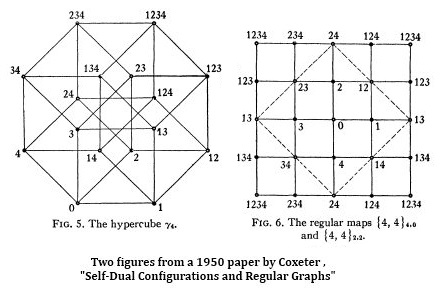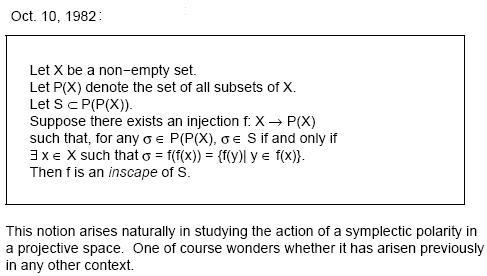The terms glitch and cross-carrier in the previous post
suggest a review —

|
|
For some backstory, see Glitch, Gerard Manley Hopkins, Inscape —
particularly the post A Balliol Star.
The terms glitch and cross-carrier in the previous post
suggest a review —

|
|
For some backstory, see Glitch, Gerard Manley Hopkins, Inscape —
particularly the post A Balliol Star.
Lord Peter Wimsey (Balliol 1912) on the Balliol-Trinity rivalry at Oxford:
See also Balliol College in the post subtitled Spidey Goes to Church.
See searches in this journal for Balliol and for Star Quality.
Related material:
Above: A Google image search for Göpel tetrads today. Click to enlarge.
Today's NY Times "Stone Links" to philosophy include
a link to a review of a collection of Hilary Putnam's papers.
Related material, from Putnam's "What is Mathematical
Truth?" (Historia Mathematica 2 (1975): 529-543)—
"In this paper I argue that mathematics should be interpreted realistically – that is, that mathematics makes assertions that are objectively true or false, independently of the human mind, and that something answers to such mathematical notions as ‘set’ and ‘function’. This is not to say that reality is somehow bifurcated – that there is one reality of material things, and then, over and above it, a second reality of ‘mathematical things’. A set of objects, for example, depends for its existence on those objects: if they are destroyed, then there is no longer such a set. (Of course, we may say that the set exists ‘tenselessly’, but we may also say the objects exist ‘tenselessly’: this is just to say that in pure mathematics we can sometimes ignore the important difference between ‘exists now’ and ‘did exist, exists now, or will exist’.) Not only are the ‘objects’ of pure mathematics conditional upon material objects; they are, in a sense, merely abstract possibilities. Studying how mathematical objects behave might better be described as studying what structures are abstractly possible and what structures are not abstractly possible."
See also Wittgenstein's Diamond and Plato's Diamond.
Spidey Goes to Church
More realistically…

 .
.
Today's previous post, "For Odin's Day," discussed
a mathematical object, the tesseract, from a strictly
narrative point of view.
In honor of George Balanchine, Odin might yield the
floor this evening to Apollo.
From a piece in today's online New York Times titled
"How a God Finds Art (the Abridged Version)"—
"… the newness at the heart of this story,
in which art is happening for the first time…."
Some related art—
and, more recently—
This more recent figure is from Ian Stewart's 1996 revision
of a 1941 classic, What Is Mathematics? , by Richard Courant
and Herbert Robbins.
Apollo might discuss with Socrates how the confused slave boy
of Plato's Meno would react to Stewart's remark that
"The number of copies required to double an
object's size depends on its dimension."
Apollo might also note an application of Socrates' Meno diagram
to the tesseract of this afternoon's Odin post—
A Balliol Star
In memory of
mathematician
Graham Higman of
Balliol College and
Magdalen College,
Oxford,
Jan. 19, 1917 –
April 8, 2008
From a biography of an earlier Balliol student,
Gerard Manley Hopkins (1844-1889):
"In 1867 he won First-Class degrees in Classics
and 'Greats' (a rare 'double-first') and was
considered by Jowett to be the star of Balliol."

Hopkins, a poet who coined the term "inscape," was a member of the Society of Jesus.
According to a biography, Higman was the founder of Oxford's Invariant Society.
From a publication of that society, The Invariant, Issue 15– undated but (according to Issue 16, of 2005) from 1996 (pdf):
|
Taking the square root
of a function by Ian Collier "David Singmaster once gave a talk at the Invariants and afterwards asked this question: What is the square root of the exponential function? In other words, can you define a function f such that for all x, |
Another approach to the expression f(f(x)), by myself in 1982:

For further details,
see Inscapes.
For more about Higman, see an interview in the September 2001 newsletter of the European Mathematical Society (pdf).
Powered by WordPress